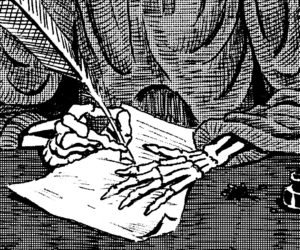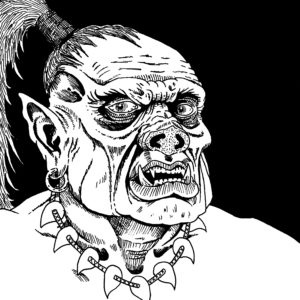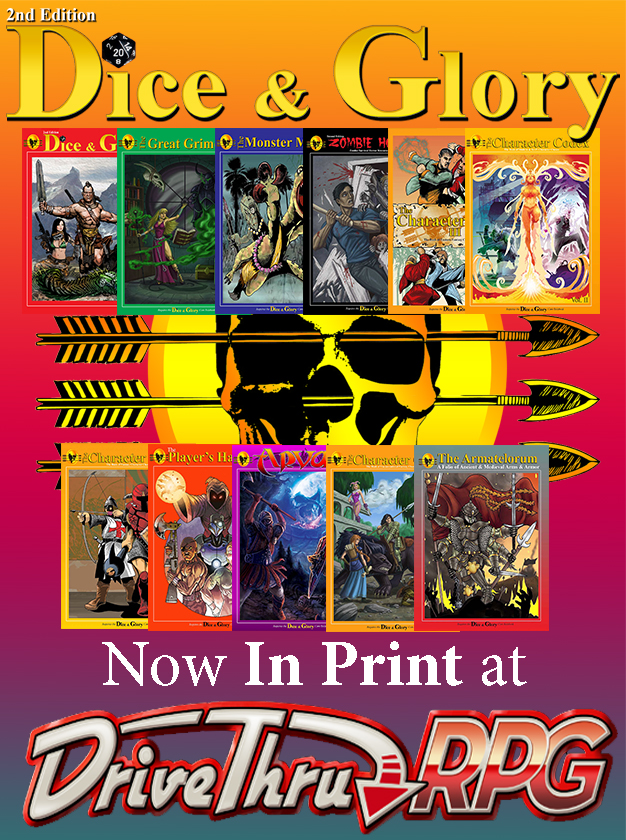
There was definitely a reaction on the part of the roleplaying community to my recent HubPages article “Why Do Orc Lives Matter?” This is a stream-of-thought meditation on that reaction as a whole and on the most common positive and negative comments. The original reason for writing the article in the first place was in response to a spate of Orc-Posting and the counter-reactions to the reactions. I also stated this in my introductory post for the article.
Note the article itself can be read here: “Why Do Orc Lives Matter?”
Range of Reactions
I appreciate the positive reactions, which were not as common as the negative but far more thought out and valuable. The most interesting reactions included mentions of maintaining Orc Armies and the Sentience of Undead creatures. The latter is actually a subject I have on the backburner but that is a stream-of-consciousness piece that philosophizes more about the nature and sentience of undead creatures and ghosts than adhering to any tabletop specifics or sourcing. These are the reasons I’ve never published it or worked further on it after putting a page of it down. I might dust it off in the future though. Note that not all of the positive comments agreed with the main thrust of my article but were civil and thought out plus the respondents seemed to have actually read the piece in the first place.
“Fantasy Wargaming and the Influence of J.R.R. Tolkien”
This document, an article from a miniature war game fanzine circa 1974 authored by Gary Gygax, was sent to me and I was aware of this document as I was conducting my research. However, it seems not to have a clear pedigree. At least at the time, I was doing my research so I could not really include it as a solid source. The main conclusion is that Gygax did not like Tolkien or his fiction. Although it doesn’t really matter how Gary Gygax felt about Tolkien when it comes to my article.
All that matters is that he was an influence on Dungeons & Dragons and the “proof is in the pudding” as it were. Tolkien is named in Appendix N as an influence and the Tolkien Estate did sue TSR over the use of Ents, Hobbits, and Balrogs to cite some obvious links. So, the influence of Tolkien on Dungeons & Dragons is very well-known and pretty much indisputable. Even in Gygax’s article, it says that both Chain Mail and Dungeons & Dragons were influenced by Professor Tolkien who originated modern Orcs, though his influence might be weaker on one than the other, it is still an influence and a solid connection.
Negative Reactions
Most of these types of responses were pretty much knee-jerk reactionary garbage most made before even reading the article itself or including a commitment to “never read it” thus making these posts utterly meaningless and ignored for the most part or responded to with “Read the Article” which elicited accusations of deflection. There were a couple of nasty responses, which I reported immediately. A few responses were puzzlingly long, that rambled about the article in such a way and I guess trying to summarize it and nitpicking details from varying game systems that just were so unorganized and confusing that I completely ignored them.
There was also a peculiar obsession on trying to shame me because of the title (all came off as a deliberate attempt to shame me into silence however). So let me be clear and reiterate – The article is asking a question that needs to be asked of our hobby because of the same forces that #BlackLivesMatter has risen to combat are tearing at our hobby, it is not gauche or insensitive and taste concerning this matter is irrelevant, the article and its title are relevant.
There were even those who claimed to have read the article and then still used the same dismissals argued against in the article proper.
Conversations
Overall, the types of reactions throughout the social media platforms I participate in split right down the middle. This lending evidence to my thought that the tabletop gaming landscape is split or splitting into two factions where concerning this issue which like all fantasy fiction is a stand-in symbol for attitudes in the community on certain real-life matters if I really had to spell that out (I guess I did, based on some of the reactions I got).
I had put off writing about Orcs as I have about Liches, Elves, Dwarves, and Trolls because to be frank, I always viewed them as cliché and over-used. Embarking on this trip, I had no idea how complex Orcs are. This article was less a tracing of the creation of the modern RPG concept of the Orc rather than the tracing of evidence as to why the concept of the Orc carries such political/emotional baggage as it does. This is especially so for certain demographics of the roleplaying community and the effects it is having on the community thus the subject should be seriously discussed. So, in my mind, the reactions and non-reaction in some quarters were very telling of the general roleplaying community. However, I do cherish the civil feedback and criticisms that I have received so far.
P.S. – I do understand those who did not want the article posted in their groups and on their boards due to the content being “too hot right now”.
[do_widget id=”cool_tag_cloud-4″ title=false]


